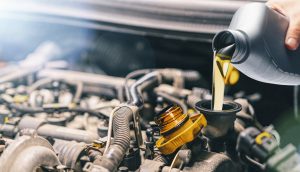Even with the best quality parts, if you don’t have everything just right, you can still have less than perfect results. Before you break-in your rebuilt Porsche engine, there are many important steps including cleaning, assembly and lubrication, and tuning that can directly affect breaking in a new engine.
Preparation
Step one is to make sure the cylinders are properly cleaned. This is very important with Nikasil cylinder bores as the Nikasil and honing oil on the cylinder bores from honing is very abrasive and if not cleaned properly, will cause cylinder, piston, and ring wear and damage. We use and recommend denatured alcohol and lint-free wipes, such as Kimwipes. Modern brake and carburetor cleaners that have been reformulated to be better for the environment just don’t cut it anymore. Bores must be wiped down until the Kimwipes come out white with no contamination whatsoever. If you have access to an ultrasonic parts washer, we recommend running the block or cylinders through that first, but denatured alcohol and Kimwipes must be used for the final cleaning prior to assembly. The piston and rings also must go through a similar cleaning process to eliminate contamination from manufacturing or any corrosion inhibitors applied during manufacturing. After cleaning and during assembly, proper lubrication during assembly is critical. Always follow directives provided by the supplier of your components for what lubricants are required, where, and in what quantity.
When it comes time to break in the engine, with modern engines and lubricants, break-in isn’t the same now as it was in decades past. Where previous the cylinder bores and rings would have to wear into each other, modern honing techniques such as plateau honing reduce the wear that occurs during break-in. In the case of an engine with Nikasil bores, the Nikasil bores don’t wear and it is the rings that have to seat. This is why cleaning of the cylinder bores and proper lubrication is so important. Any contamination of these surfaces can result in component failure.
Break-in
The final variable is tuning. Fuel dilution is a huge problem, especially if the cylinder bores are getting washed down due to excess fuel during initial engine break-in. Remember fuel is not a lubricant/
Likewise, excessive idling without putting a load on the engine during the initial run in can cause Nikasil-plated cylinder bores to glaze over, resulting in poor ring seal. This requires the engine to be disassembled to de-glaze the cylinder and re-ring the pistons to achieve proper ring seal.

It’s critical after the initial 20-30 minutes to break in the camshaft and lifters (or rockers) and get the engine up to temperature that the engine sees a load to ensure the rings can seat properly. You need cylinder pressure to seal the rings against the cylinder walls. Without access to a dyno to break in your rebuilt engine, driving the car while varying the speed and load as well as applying full throttle (without going to redline) and engine braking to seat the rings is required to break in the engine correctly. Remember, without a load, parts can’t wear in.
Switching to a race oil, partial synthetic, full synthetic, or any friction modified (containing Moly) oil too soon can prevent rings from seating properly, so we now recommend running Driven BR break-in oil for the first 20-30 minutes preferably at which time the oil should be changed out for Driven HR which should be run for the first 3000-5000 miles. Alternatively our non-friction modified 607-7177 15w40 conventional HDDEO oil can be used for initial break-in and subsequent fills for the first few thousand miles.
For tips and tricks on engine break in, check out our latest YouTube video with Certified Lubrication Specialist Lake Speed Jr. from Total Seal Piston Rings (and Driven Racing Oils previously):
Two excellent resources for engine break include: http://www.mototuneusa.com/break_in_secrets.htm
and https://www.aircooled.net/vw-engine-break-in-procedure/
Something also often overlooked is oil analysis of the initial break-in oil. Flat 6 Innovations carries out used oil analysis of every engine after break-in using SPEEDiagnostix. This establishes a baseline for what the highest wear levels should be for your engine. Each subsequent oil change should see a reduction of wear metals until it levels out. When wear starts to trend up or reaches initial wear levels noted during break-in, there is something wrong and it’s time to consider rebuilding your engine.
For those in the process of planning or executing their aircooled or watercooled Porsche engine, LN Engineering provides directives with valuable information that can be downloaded from our website free of charge:
We have gone one step further and provide additional warning and precautions for those rebuilding their Porsche Boxster, Cayman, or 911 M96 or M97 engines with common problem areas that can lead to issues during and after break-in on a freshly rebuilt engine:
https://lnengineering.com/free-download-the-m96-engine-warnings-and-precautions.html

